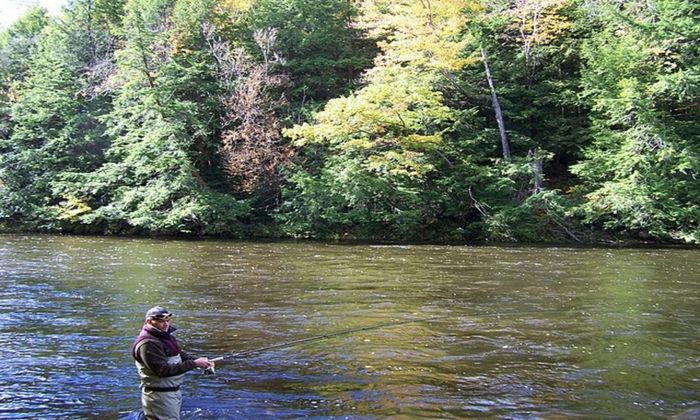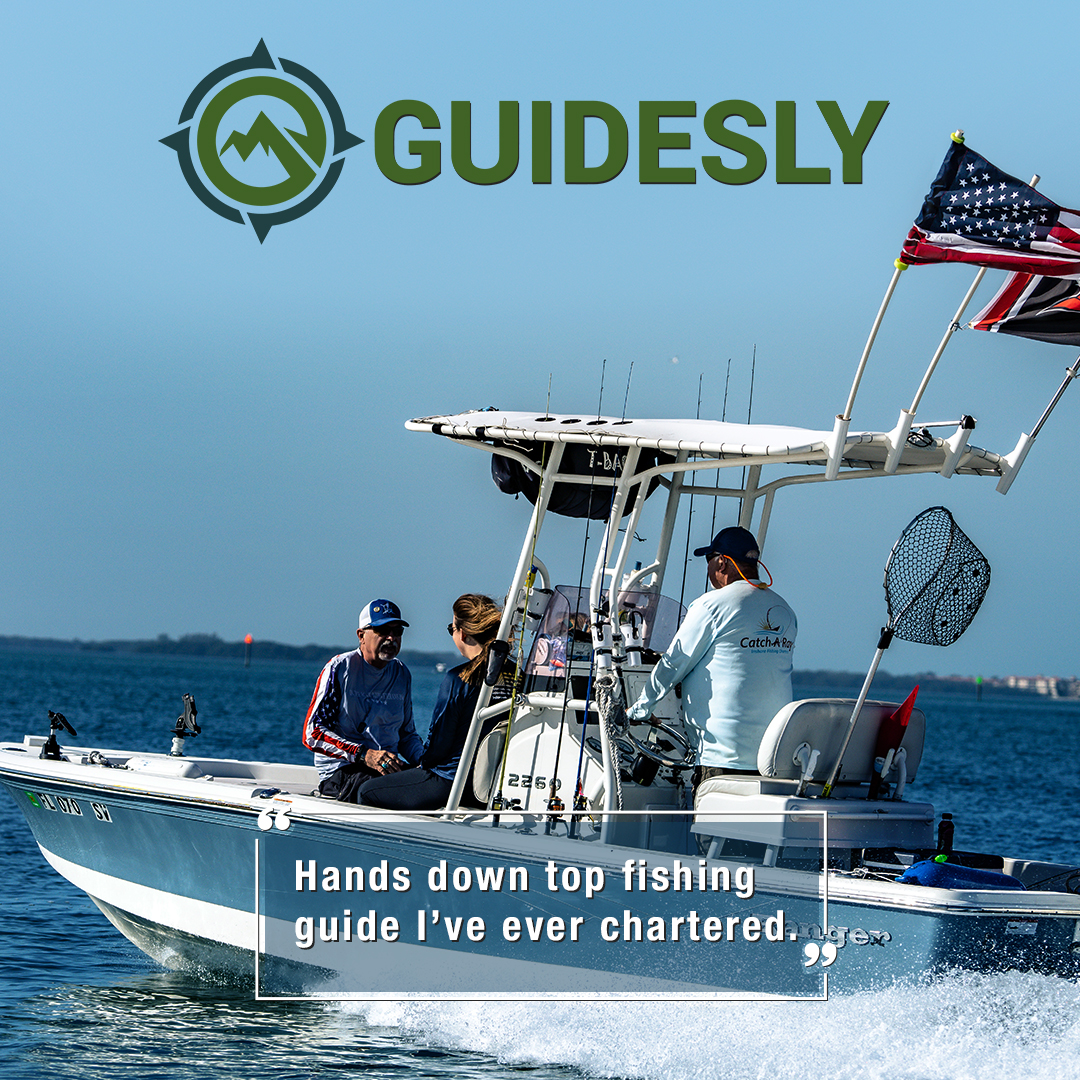Buoy 10 Salmon Fishing: The Best Leader Line Setup
Here are a few tips to help you choose the right fishing line and leader for your next salmon fishing trip.

Buoy 10 Fishery is a popular spot for boat anglers looking for the biggest catch of their lives when it comes to salmon fishing. The Tongue Point-Rocky Point boundary line is above the Astoria-Megler Bridge. Buoy 10 is the red navigational marker marking the western boundary of the Port of Ilwaco. A sure spot to bait fish such as salmon species as Buoy 10 is a route where they go through when entering the Columbia River.

According to a fishing report, the month of August marks the beginning of the fall salmon fishing season in Buoy 10, specifically in the area of the Lower Columbia River. Some of the fish found in the area are chinook salmon or big fish, coho salmon, steelhead trout, and sockeye salmon, weighing about 10-50 pounds, 8-12 pounds, 2-35, and 4-15 pounds, respectively. Considering the heft of these fish during the season, learning the basics of setting up your fishing gear and consulting your fish finder will help guarantee a good fishing experience in the area.
The Leader Line
A leader line connects the angler’s main fishing line with either a knot or a swivel. The purpose of the leader line is to protect the angler’s main fishing line from breaking and reduce the fishing line’s visibility. The leader line serves as a shock absorber for the main line, so the impact does not go directly to it, thereby lessening the chances of it breaking. In addition, leader lines also reduce the likelihood of the fish spotting the main lines as they naturally serve as fishing lures, so the fish will be attracted to the bait.

The proper way of setting up the leader line is to tie the line with the corresponding knot based on the material of the line used. It does not need a lot of equipment but does require knowledge of how to put suitable materials together.
Leader Line Setup
1. Uni-Knot
Whether the material used is monofilament or fluorocarbon, the most basic knot that is a must-have for any angler is the “uni-knot,” which is relatively durable and easy to cast on the water.
2. Double Uni-Knot
A “double uni-knot” can also be used to increase the leader line’s effectiveness as it boasts an average durability rate of 90% compared to the basic “uni-knot.”
3. FG Knot
Another knot used and designed by GT anglers or anglers fishing for giant trevally in Japan is the “fine Grip knot,” generally known as the “FG Knot.” It is a type of knot that hoops around another line, which by far is the strongest for having an average of 100% knot strength. A perfect match with fluorocarbons and considered the best type of knot and the thinnest choice compared to the Uni and Double Unit Knots. It is directly woven around the fluorocarbon, creating a light and invisible line holding the lure in place, guaranteeing a good catch.
5. Swivels
These small metal devices connect your main fishing line to the leader line. They serve their purpose by rotating to prevent the lines from twisting. Swivels are important when fishing. Their size should balance the leader line connected to them. The swivel should do the same if the leader line can handle a 50-pound fish. It is best to set them between the main and the leader lines.
6. Hook
The best hook for king salmon fishing is the Raven Specimen Hook. It comes in different sizes (2 to 14) depending on the size of your salmon. The Raven Specimen is an ideal tool to hook your fish because of its reliability and strong holding power.

7. Fishing Weights or Sinkers
A fishing weight is used to hold your bait underwater. A good sinker with great mooring can increase your catch by providing stability to the lure to prevent the fish from getting distracted.
Types of Leader Lines
The three major types of leader lines salmon anglers use are fluorocarbon leader lines, monofilament leader lines, and steel leader lines. These types of leader lines are distinct in terms of their components, usages, advantages, and disadvantages.
1. Fluorocarbon Leader Lines
Pros
It is known as the best type of leader line by most anglers. Fluorocarbon leader lines absorb less water, making them more resistant to abrasions. These leader lines have little stretch points, which are more advantageous to anglers since they can quickly feel the movement of a fish trying to shake the hook. Fluorocarbon leader lines are less visible underwater, thus less distracting to fish species than other types of leader line materials.
Some popular fluorocarbon brands are Daiwa J-Fluoro Fluorocarbon Leader 50Yd Spool at $13.99-$26.99 and Seaguar Blue Label Fluorocarbon Fishing Line Leader at $9.95-$147.99 online.
Cons
Because the line is less dense, it sinks in the water and is unsuitable for topwater fishing. A fluorocarbon leader line is more expensive than other types of leader lines.
2. Monofilament leader lines
Pros
These lines are considerably flexible, affordable, heavy-duty, and with more than the adequate stretch capacity that is greatly used for big-sized fish such as the chinook salmon. Made from single strands of plastic material, they are widely popular because they are inexpensive and easy to manufacture. They are best used when fishing in muddy or murky waters with less visibility for the fish. Monofilaments are estimated to last for two to three years from the time they are used. SF Monofilament Leader Line Clear Mono Material Clear Monofilament Fishing Line 100/M110Yds is one of the most popular brands to choose from as it has a 30-400 pound strength capacity.
Cons
The monofilament leader line is visible in clear water and has less density, which causes it to stay afloat in the water. It also absorbs more water and easily deteriorates with too much exposure to sunlight and salt during saltwater fishing. Monofilament leader lines must be regularly replaced to achieve optimum results in fishing.
3. Steel or Metal Leader Lines
Pros
The steel leader line is ideally used for large fish species with extremely sharp teeth. Like the monofilament and fluorocarbon leader lines, this leader line is exceptionally durable and affordable. Tackle Crafters' steel leader and American Fishing Wire Surflon Micro Supreme Nylon Coated 7x7 Stainless Steel Leader Wire in different break strengths are the popular brands to be purchased online.
Cons
Steel leader lines are highly inflexible, which means they can easily break if too stretched.
Conclusion
Thus, for a good fishing experience, whether chinook or steelhead fishing, certain factors such as the fishing season, low tide, incoming tide, and outgoing tide, and weather conditions are important considerations when selecting the leader line to use. Nevertheless, a good leader line dramatically contributes to the success of your next big catch. Reading your fishing guide for better fishing tips before sailing in the Pacific Northwest is best.



